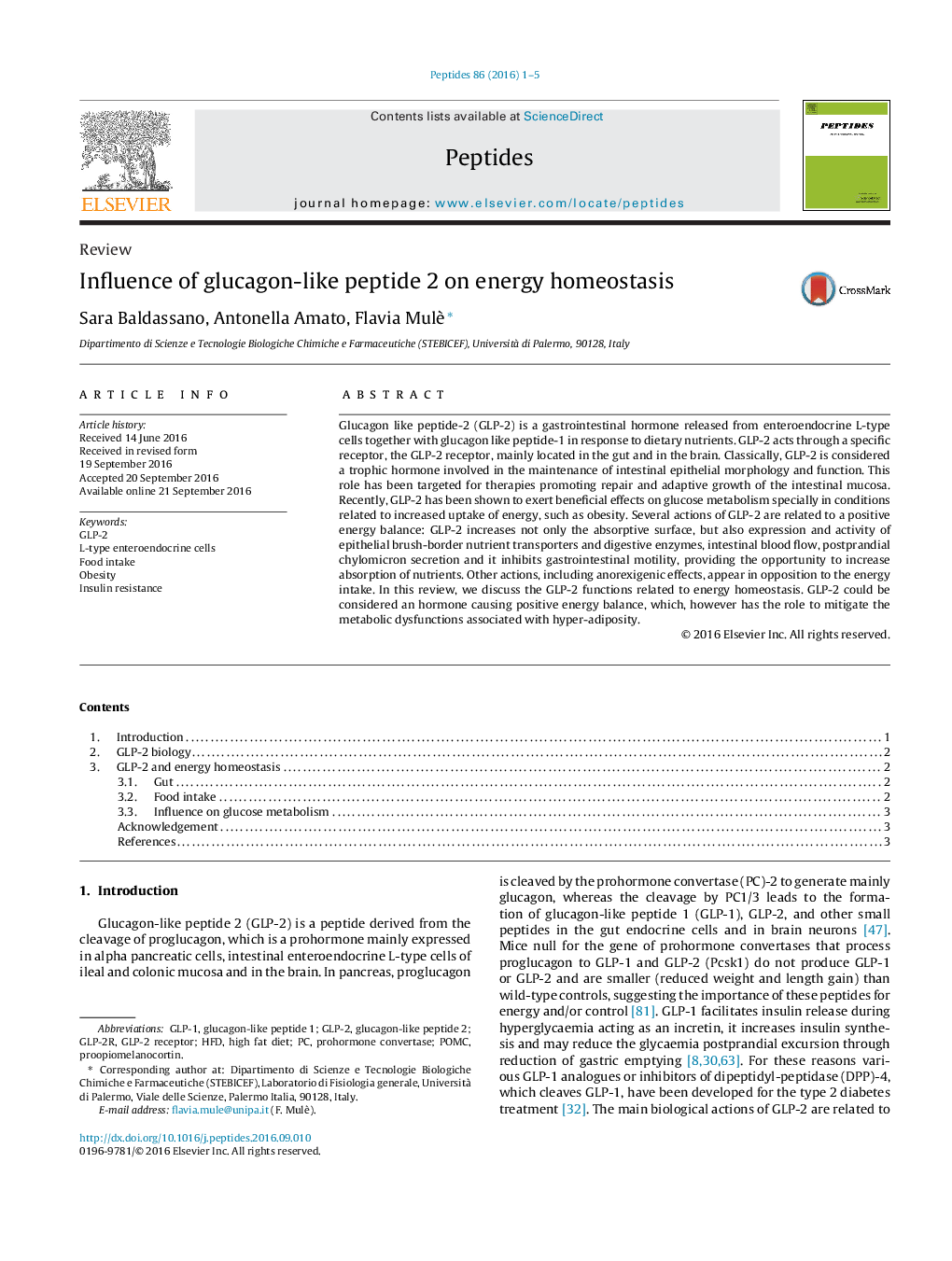| Article ID | Journal | Published Year | Pages | File Type |
|---|---|---|---|---|
| 5514746 | Peptides | 2016 | 5 Pages |
â¢Glucagon like peptide-2 is an intestinal hormone released in response to dietary nutrients.â¢Several actions of GLP-2 are related to energy homeostasis.â¢GLP-2 promotes positive energy balance and can mitigate obesity-related dysfunctions.
Glucagon like peptide-2 (GLP-2) is a gastrointestinal hormone released from enteroendocrine L-type cells together with glucagon like peptide-1 in response to dietary nutrients. GLP-2 acts through a specific receptor, the GLP-2 receptor, mainly located in the gut and in the brain. Classically, GLP-2 is considered a trophic hormone involved in the maintenance of intestinal epithelial morphology and function. This role has been targeted for therapies promoting repair and adaptive growth of the intestinal mucosa. Recently, GLP-2 has been shown to exert beneficial effects on glucose metabolism specially in conditions related to increased uptake of energy, such as obesity. Several actions of GLP-2 are related to a positive energy balance: GLP-2 increases not only the absorptive surface, but also expression and activity of epithelial brush-border nutrient transporters and digestive enzymes, intestinal blood flow, postprandial chylomicron secretion and it inhibits gastrointestinal motility, providing the opportunity to increase absorption of nutrients. Other actions, including anorexigenic effects, appear in opposition to the energy intake. In this review, we discuss the GLP-2 functions related to energy homeostasis. GLP-2 could be considered an hormone causing positive energy balance, which, however has the role to mitigate the metabolic dysfunctions associated with hyper-adiposity.
